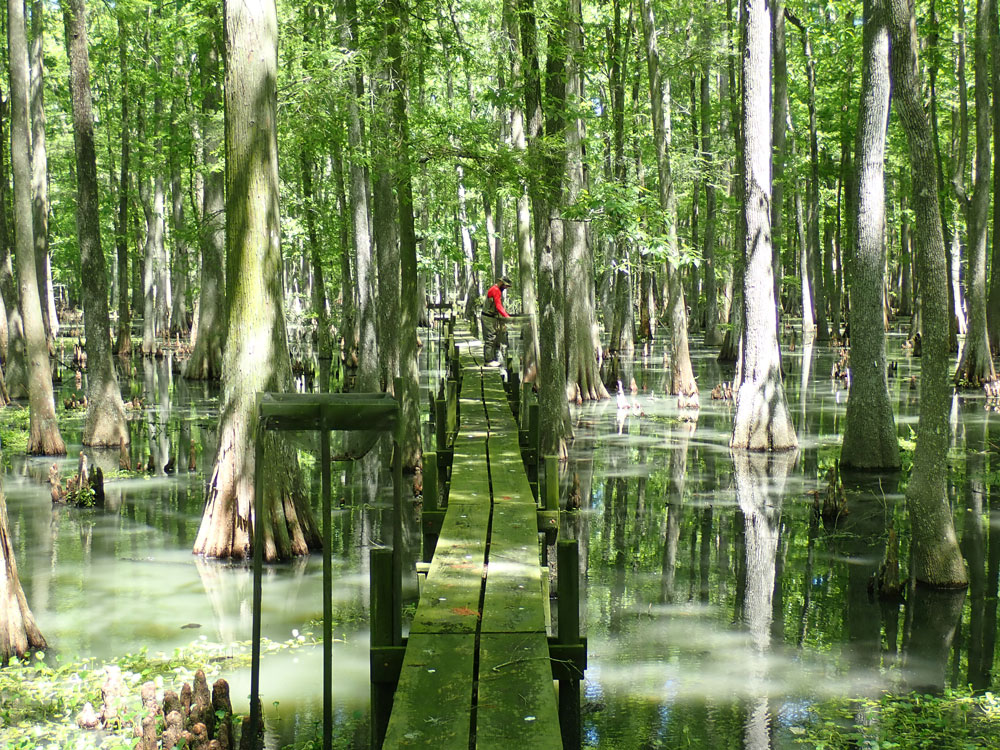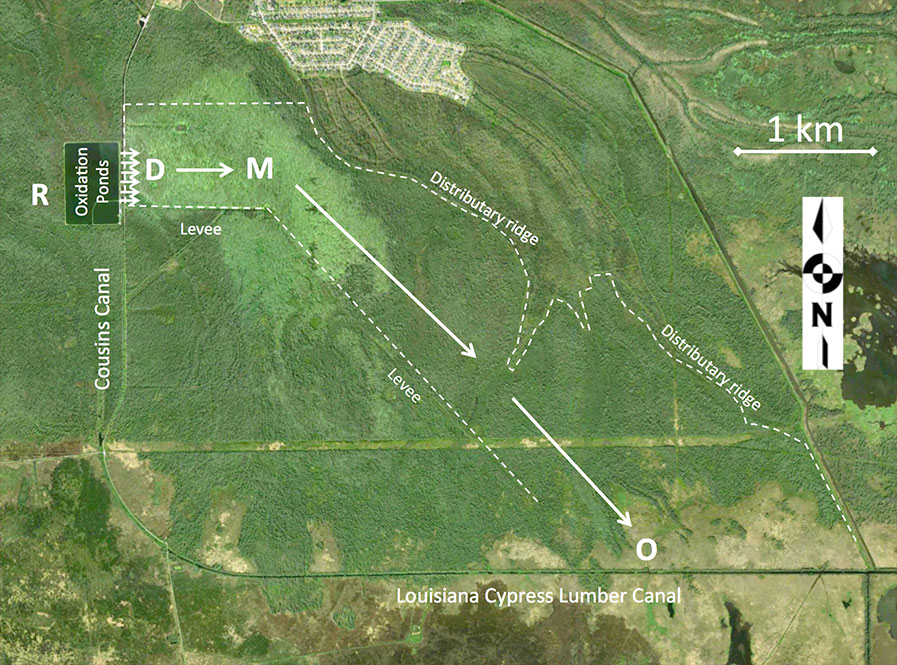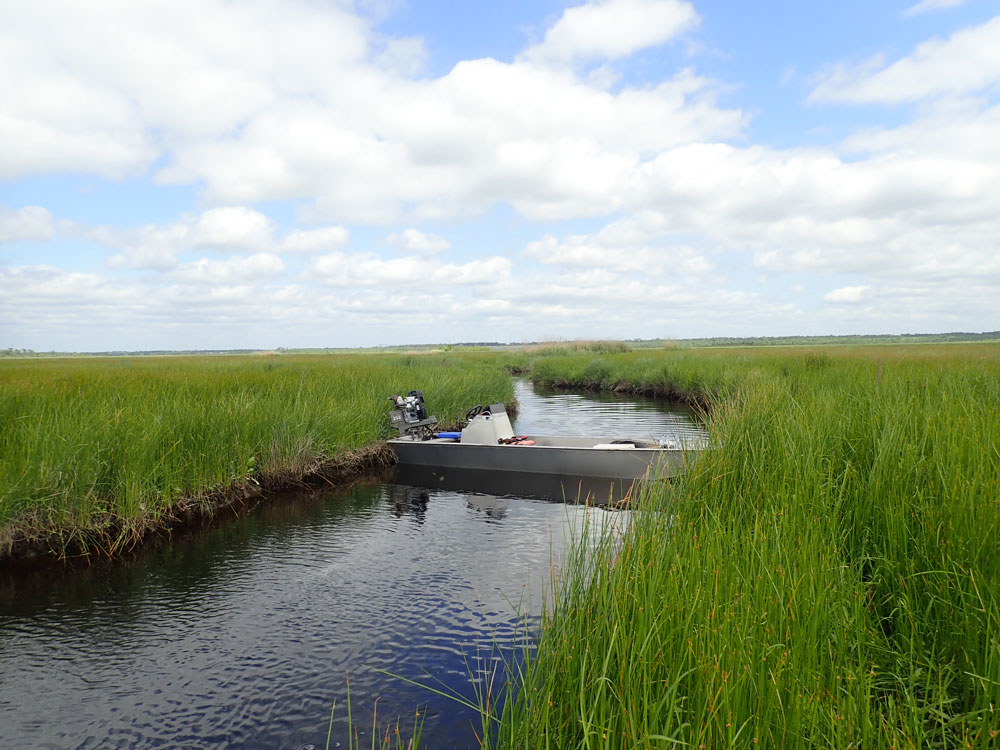St. Charles Parish has been using wetlands assimilation since 2008. The wastewater treatment facility consists of a facultative oxidation pond with a chlorination and dechlorination disinfection system with an average discharge of 1.6 million-gallons-per-day. Before 2008, the treatment plant discharged into Cousin Canal, which drains into Lake Cataouatche via the Louisiana Cypress Lumber Canal. Starting in 2008, the treated municipal effluent was piped approximately 150 ft to a 1439 ha cypress-tupelo dominated forested wetland. Effluent is retained within the project boundaries by low-lying levees running along the northern, eastern, and western boundaries that prevent hydrological exchange with the surrounding landscape, except at the southern most extent of the project area where water flows out of the project area into the Louisiana Cypress Lumber Canal and then to Lake Cataouatche.
Comite Resources carried out a carbon sequestration study at the St. Charles assimilation wetlands. Changes in carbon stocks of trees and soils as well as methane and nitrous oxide emissions were measured over a one-year period and compared to baseline conditions derived from the scientific literature (see Carbon Sequestration). Methods and equations were applied from the American Carbon Registry (ACR) wetland carbon offset methodology ‘Restoration of Degraded Deltaic Wetlands of the Mississippi Delta’. The results of the study demonstrate that wetland assimilation increases wetland productivity and enhances carbon sequestration. See Lane et al. 2017 for the peer-reviewed scientific study.
Comite Resources has been carrying out wetlands assessment of the site since effluent was diverted into the wetlands in 2008. Monitoring includes measurements of tree growth (dbh & leaf) and productivity, water hydrology, soil accretion, and nutrients and metals concentrations of surface waters, soils and vegetation. These measurements are made at permanent plots located in the forest directly impacted by the effluent (termed the Discharge site), where the surface water exits the assimilation wetland (termed the Out site), and a site in between these two sites (termed the Mid site), as well as a nearby Reference site that is not impacted by the effluent for comparison (see Hunter et al. 2009b and Hunter et al. 2018). Below are monitoring reports from this site describing work carried out and preliminary data.





